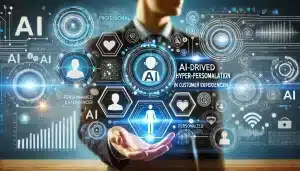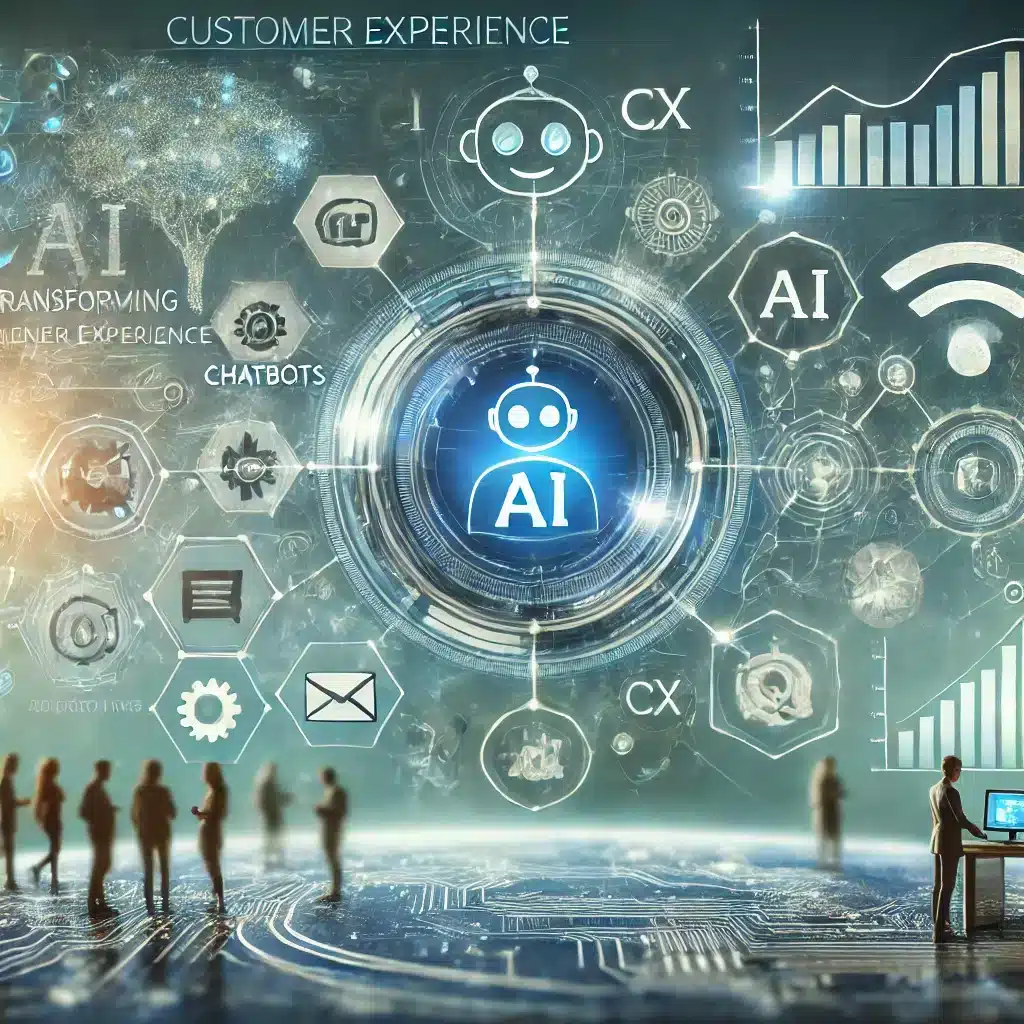In the rapidly changing landscape of customer experience, Harnessing AI is increasingly being used to create hyper-responsive service models. AI-powered hyper-personalization helps organizations to tailor their products or services to meet the unique needs and preferences of individual customers. This article explores the intricacies of hyper-personalization and how businesses can leverage AI technologies to improve customer satisfaction and engagement.
What is Hyper-Personalization and How Can AI Enhance Customer Experience?
Understanding Hyper-Personalization in Customer Experience
Hyper-personalization is the process in which a highly personalized experience is delivered through the effective use of customer data and deep analytics. In contrast with traditional personalization, wherein recommendations may be based merely on broad categories, hyper-personalization digs deeper in terms of individual customer behavior and preferences. This approach is designed to involve customers on a more meaningful level to create loyalty and enhance customer satisfaction. Businesses can analyze vast amounts of customer data in real–time through the power of AI and create tailored experiences resonating with each user.
Role of AI in Achieving Hyper-Personalization
AI plays a prime role in achieving hyper-personalization by allowing businesses to process and analyze customer data efficiently. With the help of AI models, organizations can track and understand customer journeys, identify patterns, and preferences that inform personalized marketing strategies. AI systems, especially those using machine learning, can automate the analysis of customer interactions and feedback, providing insights that help refine the personalization process. In addition to this, with the integration of generative AI, businesses can now generate content and recommendations tailored precisely to their individual customers and thus raise the level of customer experience.
Examples of Hyper-Personalized Experiences Using AI
Hyper-personalized experiences are being utilized by various companies using different AI technologies. For instance, in an e-commerce platform, AI algorithms have been deployed to analyze one’s history of browsing and purchases, therefore providing the client with recommended products. Netflix uses AI to customize content recommendations based on viewing habits so that users discover shows and movies that are relevant to their interests. Customer support is also using conversational AI to personalize interactions so that inquiries can be addressed in a way that resonates with the individual customer‘s needs. These examples illustrate how businesses can enhance engagement and satisfaction through hyper-personalized experiences.
How Can Businesses Implement AI for Hyper-Personalization at Scale?
Steps to Implement AI-Powered Personalization Strategies
To leverage AI-powered personalization strategies successfully, businesses need to adhere to a step-by-step approach. Organisations have to collect and analyze the customer data coming through various touch points, which includes interactions on the website, social media engagement, and purchasing history. This sets the foundation to understand what the customers behave like and what are their preferences. Next, businesses should invest in AI tools and platforms that facilitate the analysis of this data, enabling them to identify trends and patterns. Finally, organizations can develop and deploy AI models that tailor marketing messages and product recommendations, ensuring that each customer receives a highly personalized experience. Continuous monitoring and optimization of these strategies are crucial to adapt to changing customer needs.
Challenges in Scaling Hyper-Personalization Using AI
Although the scope of hyper-personalization using AI is very broad, businesses have to face a plethora of hurdles in scaling efforts. Majorly, an organization often has disparate sources of information, which acts as an insurmountable problem and creates silos by not being integrated to make an overall customer behavior insightful. Another factor that acts as a challenge is regarding data privacy and regulatory issues in accumulating and using data about their customers. Lastly, there is often a skill gap in leveraging AI technologies, as businesses require personnel who are adept at using AI tools and analytics to derive actionable insights. Addressing these challenges is essential for successfully implementing hyper-personalization at scale.
Tools and Platforms for AI-Driven Hyper-Personalization
There are numerous tools and platforms available that can assist businesses in their journey toward AI-driven hyper-personalization. AI platforms equipped with machine learning capabilities can analyze customer data in real time, providing insights that help tailor experiences. For instance, customer relationship management (CRM) systems that incorporate AI can enhance customer engagement through personalized marketing campaigns. Additionally, businesses can leverage large language models to create dynamic content that adjusts based on customer interactions. By using these AI tools effectively, organizations have the potential to enhance customer satisfaction dramatically through personalized experiences.
What Are the Use Cases of Generative AI in Hyper-Personalization?
Generative AI and Its Impact on Customer Satisfaction
Generative AI has emerged as a transformative force in hyper-personalization, significantly impacting customer satisfaction. By employing generative models, businesses can create personalized content, such as targeted emails or product descriptions, that resonates with individual customers. This level of customization enhances the relevance of communications and helps to build stronger relationships between brands and their customers. As a result, customers feel more valued and understood, leading to increased loyalty and improved customer experience.
Real-Time Personalization Use Cases with Generative AI
Real-time personalization is one of the most significant aspects of hyper-personalization. Generative AI is key to this: for example, while making an online purchase, a generative AI can observe the real-time behavior of a customer and suggest what a particular customer is likely to want to purchase or be promoted to him. Generative AI may tailor the marketing message and pictures presented based on the customer interaction and can thus ensure relevant content in front of an interested consumer. These cases point to how generative AI is improving the process of personalization by tuning in and adjusting interactions on an instant basis to align with customer needs.
How Generative AI Models Tailor Customer Interactions
Generative models of AI are geared for customer interactions, as the core application is based on the extraction of data-related insights. This helps it analyze enormous datasets, ranging from a customer‘s previous interactions to preference models, for real-time customized answers. For example, a customer service scenario would receive solutions generated by generative AI depending on the unique problems of the customer interacting, thereby significantly improving the efficacy of the service. Continuous learning based on feedback and behavior can always update generative AI models for ensuring the right response to ensure every interaction is highly personal and relevant to the specific customer.
How to Leverage Analytics for Improved Customer Experience?
The Role of Data Analytics in Hyper-Personalization
Data analytics is the pillar of hyper-personalization and gives organizations actionable insights on customers’ behavior and preference. In analysing customer data, organisations have identified trends and patterns that inform personalisation strategies. This analytical approach enables businesses to understand nuances in the customer journey. It allows every interaction with customers to be tailored in relation to the individual needs of the customer. In addition, by using analytics, businesses remain ahead of competitors, anticipating the expectations of the customer and adjusting their offering to this end.
Using AI Analytics to Understand Customer Journeys
AI analytics tools provide businesses with the capability to map out customer journeys comprehensively. By employing machine learning algorithms, organizations can segment customers based on behavior and preferences, allowing for targeted marketing efforts. These insights enable businesses to identify key touchpoints in the customer journey where hyper-personalization can be applied, enhancing the overall customer experience. Furthermore, AI analytics can predict future customer behavior, empowering businesses to proactively tailor their offerings to align with evolving customer needs.
Automation of Customer Insights for Personalization
AI analytics tools, through this capability, allow the businesses to map out customer journeys very thoroughly. With the support of machine learning algorithms, segmentation based on behavior and preference allows an organization to market it with better targeted marketing. Those insights can be used as opportunities to enhance the general experience for the customer around touchpoints in the customer journey through hyper-personalization. Moreover, AI analytics can forecast the future behavior of customers. Therefore, businesses will be in a position to design their products according to the changes in the customer‘s preferences and needs.
What Are the Future Trends in AI-Powered Hyper-Personalization?
Emerging Technologies in Generative AI for Personalization
New trends are emerging as generative AI technologies advance in shaping the future of hyper-personalization. The other major trend is conversational AI in customer interactions. This will enable businesses to have real-time conversations with customers to offer them personalized recommendations and support. Another advancement in natural language processing will improve the capacity of AI systems to comprehend and respond to customer queries, thereby further improving personalization. As these technologies evolve, business opportunities to create immersive and personalized experiences for customers will grow.
Predictions for Customer Experience Evolution with AI
The future of customer experience with AI will be hyper-personalization. The more accustomed the customers become to having experiences that are tailored to their preferences, the more businesses need to have sophisticated personalization strategies to meet the expectations. In that development, predictive analytics will greatly assist; these will help anticipate what their customers want before the necessity arises. Finally, by embedding AI on various contact points, companies will gain the ability to seamlessly give their customers smooth and rich interactions across multiple channels to provide consistent experiences in relation to the customers’ varied choice and preference.




